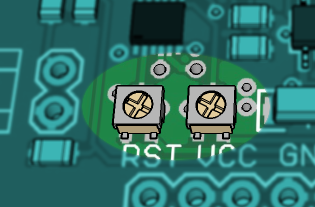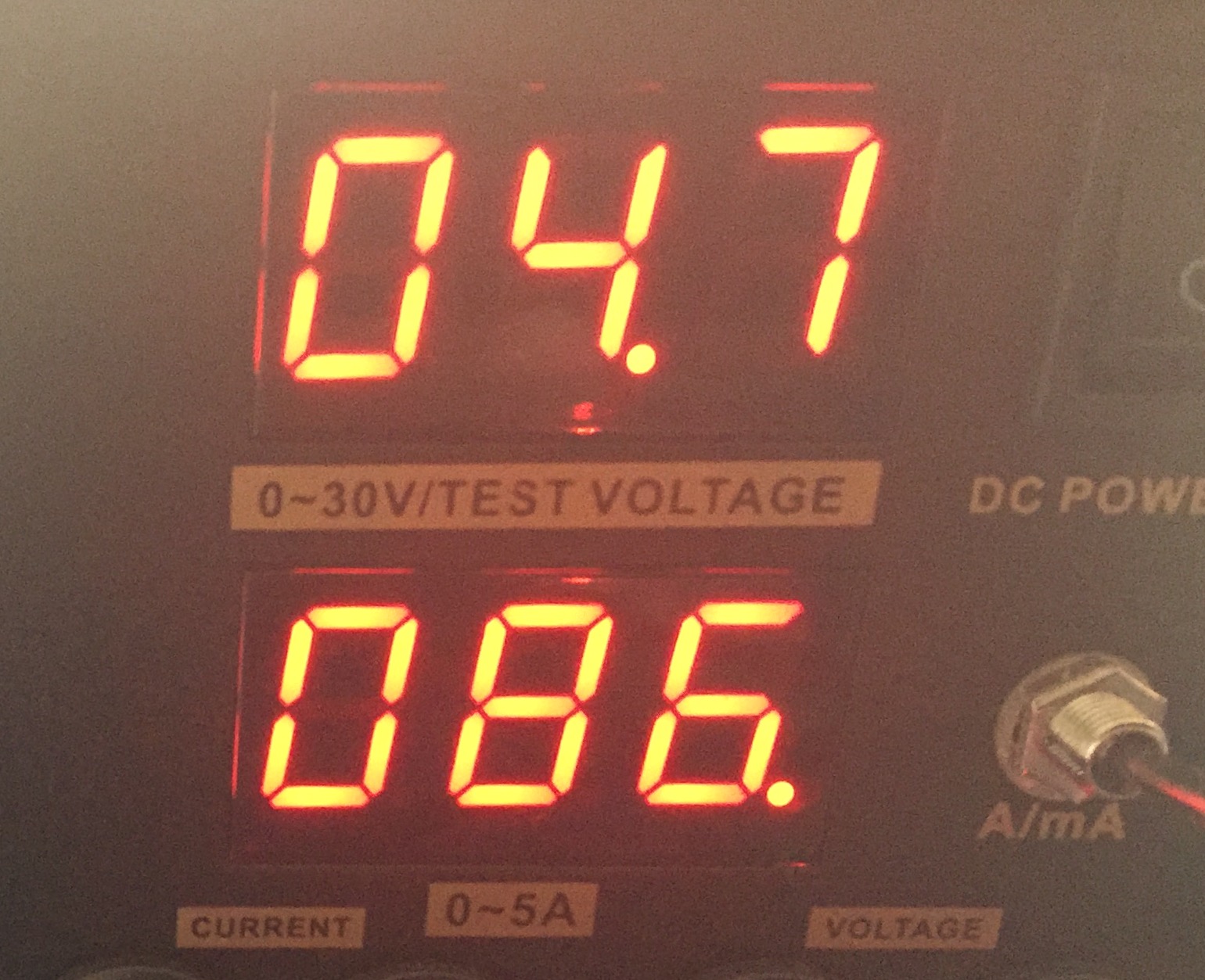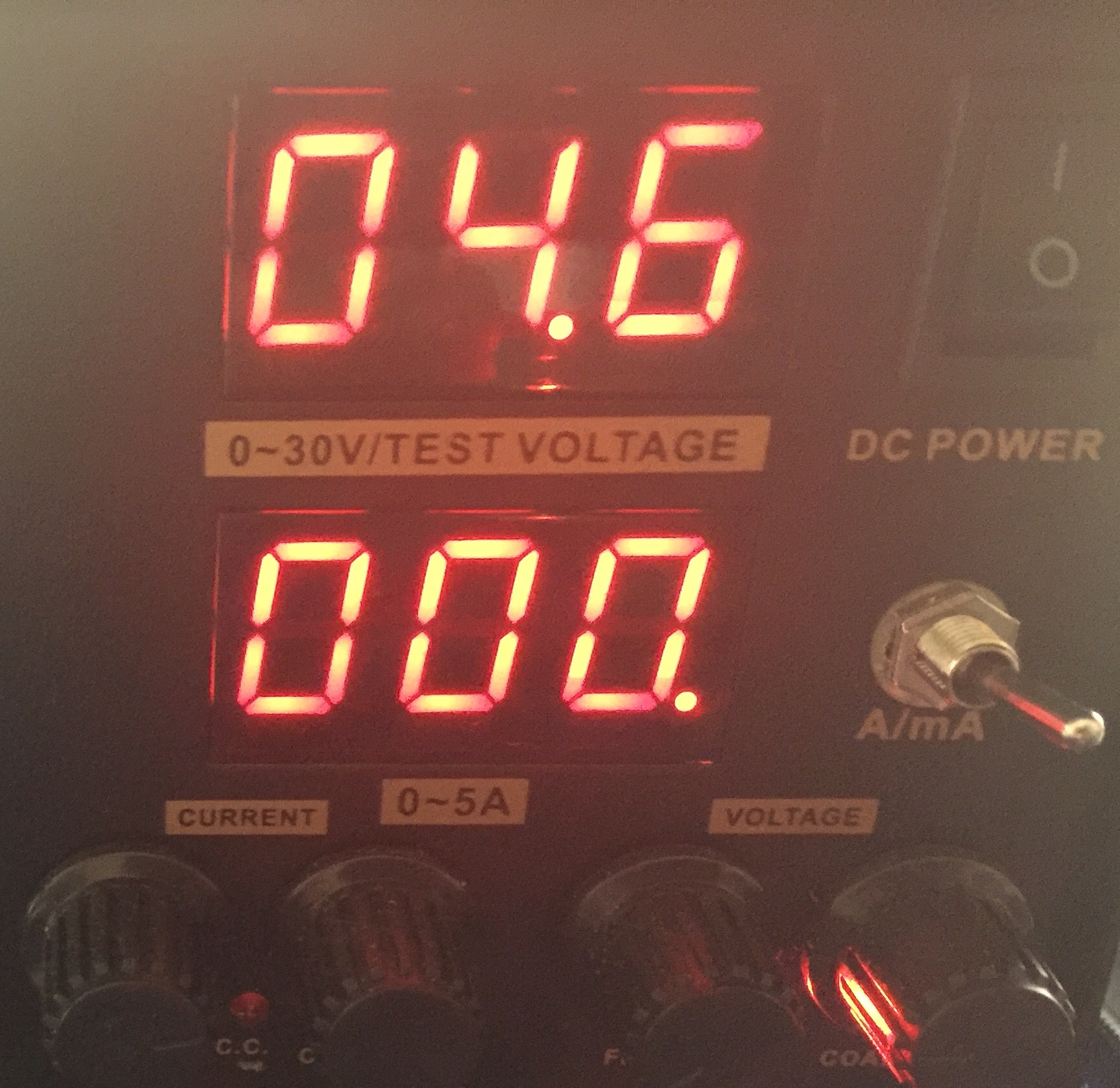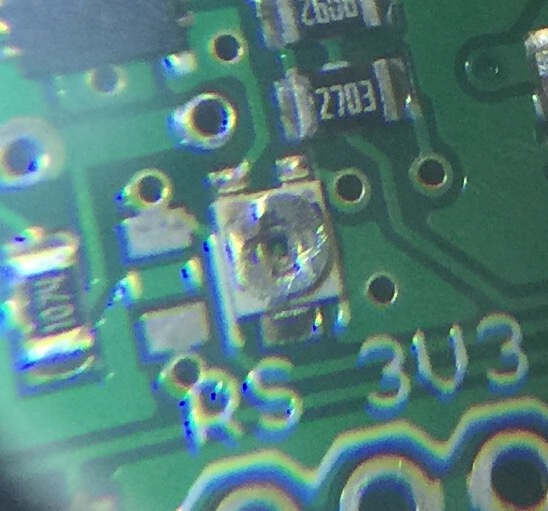Multisensor node using Ceech board
-
Thanks for the feedback.
I think the key here is in the potentiomenters, so I looked around for some guidance:
The two trimmer potentiometers are used to determine the current for both the input side - to better match the internal resistance of the solar cell - and for the battery charge current. At shipping they are both set to around half the value ( 2.5kOhm), which set both currents to about 75mA.I don't know how to measure the internal resistance of the solar cell (shouldn't be as simple as measuring it with a ohmmeter, right?), but I'm assuming that if 75mA is half the value, the maximum should be 150mA. Since my panels in parallel can supply (theoretically) up to 200mA, I'll rotate the potentiomenter to its maximum. Now, wich potentiomenter is it (not identified in the board), and what to tune in the other potentiometer (should be the same mA, what does it depend on)?
@Ceech, Any guidance on how to overcome this not-charging problem?
Thanks,
Joao@joaoabs Try lowering input voltage. The IC is in overvoltage mode and we don't want to damage it. Next, try with 5V input. See if you get the charge.
The trimmer potentiometers:

The left one is battery charge current limit. Turn it to the left in order to maximize charging current.
And the right one is input current limit. Keep the input current below solar panel maximum current. Turn it left to increase current limit.This is a formula to calculate input current: Ilim = 200V/Rclprog , where Rclprog stands for trimmer resistance.
And this is how you calculate charging current: Ich = 1000V/Rprog, where Rprog stands for trimmer resistance. It is also limited with input current. -
@ceech I'm using a more recent version of this board, with an LTC4079 charger (instead of the LTC4067).
Which Arduino pin is the ~CHRG signal brought out on? A2 appears to be Vin (solar cell), whereas if I do analogRead(A7) I get a value around 500 (regardless of whether Vin is connected or not)?
-
~CHRG is at ADC A7. It pulls low when the battery is getting charged. It's not always zero, sometimes is stuck around 10 or below. It works in conjunction with ADC A6, which is a battery current pin. Do you get any reports here?
-
@ceech I've connected a 5V USB supply to the solar cell input, and I'm running your example sketch from your eBay web page for this board. I'm seeing a battery voltage of 3.59V (Li-ion), and charge current (monitoring A6) of 0.00mA - suggesting the battery isn't charging? As said before, A7 is showing values around 479.
Vcc = 3.30V
Charge current = 0.00mA
Solar cell voltage = 4.98V
Battery voltage = 3.59V
CHRG = 479 -
Ah, yes. I think i know what the problem is. The LTC4079 has a built-in MPPT power tracking for solar panels and won't charge if the input voltage is below set point. This helps optimizing power extraction from solar panels. If you are using 5V input, then you should adjust the trimmer pot on the board. Like this

Turn the top round part of the trimmer to the left so that the wiper reaches 5V mark like on the above picture. In other words reduce trimmer resistance to minimum. The other way around is for 18V solar panels. -
@ceech I have the same problem with the LTC4079 board:
Running a simplified sketch gives the following:
Vcc = 3.39V Charge current = 2.26mA Solar cell voltage = 5.40V Battery voltage = 4.11V CHRG = 502 Vcc = 3.42V Charge current = 0.25mA Solar cell voltage = 5.41V Battery voltage = 4.11V CHRG = 500 Vcc = 3.35V Charge current = 0.00mA Solar cell voltage = 5.24V Battery voltage = 4.11V CHRG = 498 Vcc = 3.33V Charge current = 0.00mA Solar cell voltage = 5.19V Battery voltage = 4.08V CHRG = 496CHRG is never goes to zero or close and the charging current is low or zero. Shall I try to adjust the same potentiometer as above?
-
If the trimmer is in the same position as when new, then yes. Turn it anti-clockwise to reach its minimum value. Either that or raise the input voltage to 11V.
-
If the trimmer is in the same position as when new, then yes. Turn it anti-clockwise to reach its minimum value. Either that or raise the input voltage to 11V.
-
This is a one turn trimmer. Its minimum value is close to 5V mark on one of the above pictures. And its maximum value is next to 18V mark. Since you've turned it more than once, you have to first determine the current wiper position. If you look closely you can see that the turning top is not quite round. One side is a bit flattened. That is the opposite side of the wiper. Now if you take a look at your picture then I think your wiper position is at around 6 or 7V ( to use the same terminology). I would say 20 more degrees to the left and you'll reach 5V.
You can also measure the trimmer's resistance. Like so

Find the minimum value between marked points. That is your target resistance value. -
@ceech - many thanks for above.
I think I nailed it finally.
Is the voltage below normal or can that be adjusted somehow?Vcc = 3.35V Charge current = 34.22mA Solar cell voltage = 4.55V Battery voltage = 3.80V CHRG = 446 Vcc = 3.39V Charge current = 31.87mA Solar cell voltage = 4.72V Battery voltage = 3.78V CHRG = 451When does analogue A7 (CHRG) go down to zero or around zero?
-
What voltage would you like to adjust?
The current is a bit low. What is your panel's maximum available current?
The charger is not operating at its full power. Either you are a bit high with the setting on the trimmer or the panel can't supply enough. Charging current should be around 90mA. -
@ceech The solar panal is 6V 4.5W, but right now it is used inside under my table lamp hence a lower voltage (4.7V). I'll to put it in the sun once the weather improves to test it.
EDIT: I have not tested the solar panel before in the sun. Obviously, it provides ~4.8V inside and not sure if it will provide closer to 6v in the sun. I purchased it here http://www.ebay.co.uk/itm/281945297221
Can I connect 5.5v power supply to the 'solar cell' contacts from a reliable PSU to test the trimmer settings ?
-
@ceech The solar panal is 6V 4.5W, but right now it is used inside under my table lamp hence a lower voltage (4.7V). I'll to put it in the sun once the weather improves to test it.
EDIT: I have not tested the solar panel before in the sun. Obviously, it provides ~4.8V inside and not sure if it will provide closer to 6v in the sun. I purchased it here http://www.ebay.co.uk/itm/281945297221
Can I connect 5.5v power supply to the 'solar cell' contacts from a reliable PSU to test the trimmer settings ?
-
Sure use your power supply. No problem. If the solar cell is 6V, than leave the trimmer. I think you got it just right.
And you were getting 30mA INDOORS? That's great. I'm quite pleased with that information.
This means that this sensor board can also be used as Indoors solar harvester. -
@ceech yes, 30ma indoor, but it is under a direct light. The cut-off voltage is around 4.7V for charging.


-
@alexsh1 You are at the minimum then. The trimmer was calculated for 4.75V minimum voltage. You might want to raise it a little to get 5.5V-6V MPPT.
-
@ceech Ok, but what's the tolerance please? I do want the threashhold to be at the minimum level, but meantime I do not want to damage LTC4079.
-
@alexsh1 No need to worry about minimum voltage destroying the IC. It is just necessary for the battery to receive full charge that the input voltage is within 4.75V and 20V.

